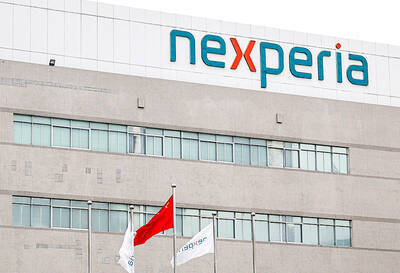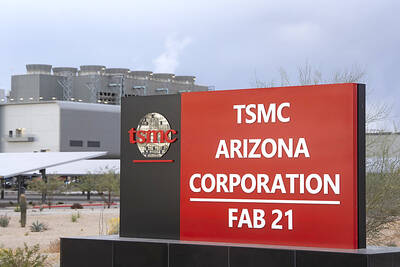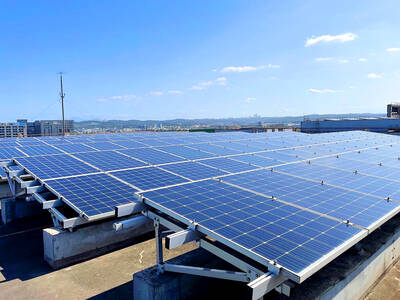Hon Hai Precision Industry Co (
The center will focus on nanotechnology and precision-optical machinery.
"We hope the establishment of the new R&D center will expedite our R&D process and, therefore, enhance our competitiveness," Hon Hai's founder and chairman Terry Gou (
Hon Hai, which might replace Singapore's Flextronics International Ltd to become the world's largest EMS provider, plans to expand its R&D manpower to a maximum of 3,000 people and pour NT$12 billion into the center for the next three years.
The company has lodged up to 17,000 applications for patents and has patented around 12,000 inventions so far, Gou said.
The center is expected to facilitate the company's transformation into "high-tech Hon Hai" from merely "manufacturer Hon Hai" by attracting overseas researchers and cooperating with foreign R&D centers, Gou said.
The project has three stages. Hon Hai plans to complete the first-stage of construction by next July and recruit 1,000 R&D specialists at the same time.
The company posted consolidated revenue of NT$327.79 billion last year, up from NT$245.09 billion in 2002. It has generated sales of NT$166.05 billion for the first half of this year, around 37.74 percent of the forecasted NT$440 billion worth of revenue for this year.
"The company often sets aside 10 percent to 15 percent of its annual revenue for the R&D work," said Chen Ga-lane (
Strong R&D capability would back up the company's plan to expand its layouts of computer, communication, consumer electronics (3Cs) into 6Cs domains (3Cs plus cars, channels and [digital] contents), he said.
According to Chen, R&D work in the new center will begin in two years on nanotech stampers, nanotech optics and nanotech heat conductivity, in collaboration with the National Nano Devices Laboratories under the National Science Commission and Tsinghua University in Beijing.
These technologies could be applied in the manufacture of component parts such as nanotech batteries for notebooks or hand-sets, which have double the energy capacity of current batteries, and printer-reader heads for better printing quality, he said.
Hon Hai has set up several R&D centers, including one in Tokyo for precision machinery, Beijing for academic nanotech research, San Jose, California, for e-papers and Finland for wireless technology.
The company's Beijing center is focusing on developing nanotechnology for electronic circuits and devices from single atoms and molecules, but will turn its focus toward miniature batteries and heat-dissipation products within three years, according to a report in a Chinese-language newspaper yesterday.

JITTERS: Nexperia has a 20 percent market share for chips powering simpler features such as window controls, and changing supply chains could take years European carmakers are looking into ways to scratch components made with parts from China, spooked by deepening geopolitical spats playing out through chipmaker Nexperia BV and Beijing’s export controls on rare earths. To protect operations from trade ructions, several automakers are pushing major suppliers to find permanent alternatives to Chinese semiconductors, people familiar with the matter said. The industry is considering broader changes to its supply chain to adapt to shifting geopolitics, Europe’s main suppliers lobby CLEPA head Matthias Zink said. “We had some indications already — questions like: ‘How can you supply me without this dependency on China?’” Zink, who also

Taiwan Semiconductor Manufacturing Co (TSMC, 台積電) received about NT$147 billion (US$4.71 billion) in subsidies from the US, Japanese, German and Chinese governments over the past two years for its global expansion. Financial data compiled by the world’s largest contract chipmaker showed the company secured NT$4.77 billion in subsidies from the governments in the third quarter, bringing the total for the first three quarters of the year to about NT$71.9 billion. Along with the NT$75.16 billion in financial aid TSMC received last year, the chipmaker obtained NT$147 billion in subsidies in almost two years, the data showed. The subsidies received by its subsidiaries —

At least US$50 million for the freedom of an Emirati sheikh: That is the king’s ransom paid two weeks ago to militants linked to al-Qaeda who are pushing to topple the Malian government and impose Islamic law. Alongside a crippling fuel blockade, the Group for the Support of Islam and Muslims (JNIM) has made kidnapping wealthy foreigners for a ransom a pillar of its strategy of “economic jihad.” Its goal: Oust the junta, which has struggled to contain Mali’s decade-long insurgency since taking power following back-to-back coups in 2020 and 2021, by scaring away investors and paralyzing the west African country’s economy.

RE100 INITIATIVE: Exporters need sufficient supplies of renewable energy to meet their global commitments and remain competitive, the economics ministry said Local export-oriented manufacturers, including Taiwan Semiconductor Manufacturing Co (台積電), require sufficient supplies of green energy to maintain their competitiveness and regulations already ensure that renewable energy development adheres to environmental protection principles, the Ministry of Economic Affairs said yesterday, as the legislature imposed further restrictions on solar panel installations. The opposition-led Legislative Yuan yesterday passed third readings to proposed amendments to three acts — the Environmental Impact Assessment Act (環境影響評估法), the Act for the Development of Tourism (發展觀光條例) and the Geology Act (地質法) — which would largely prohibit the construction of solar panels in some areas. The amendments stipulate that ground-mounted solar